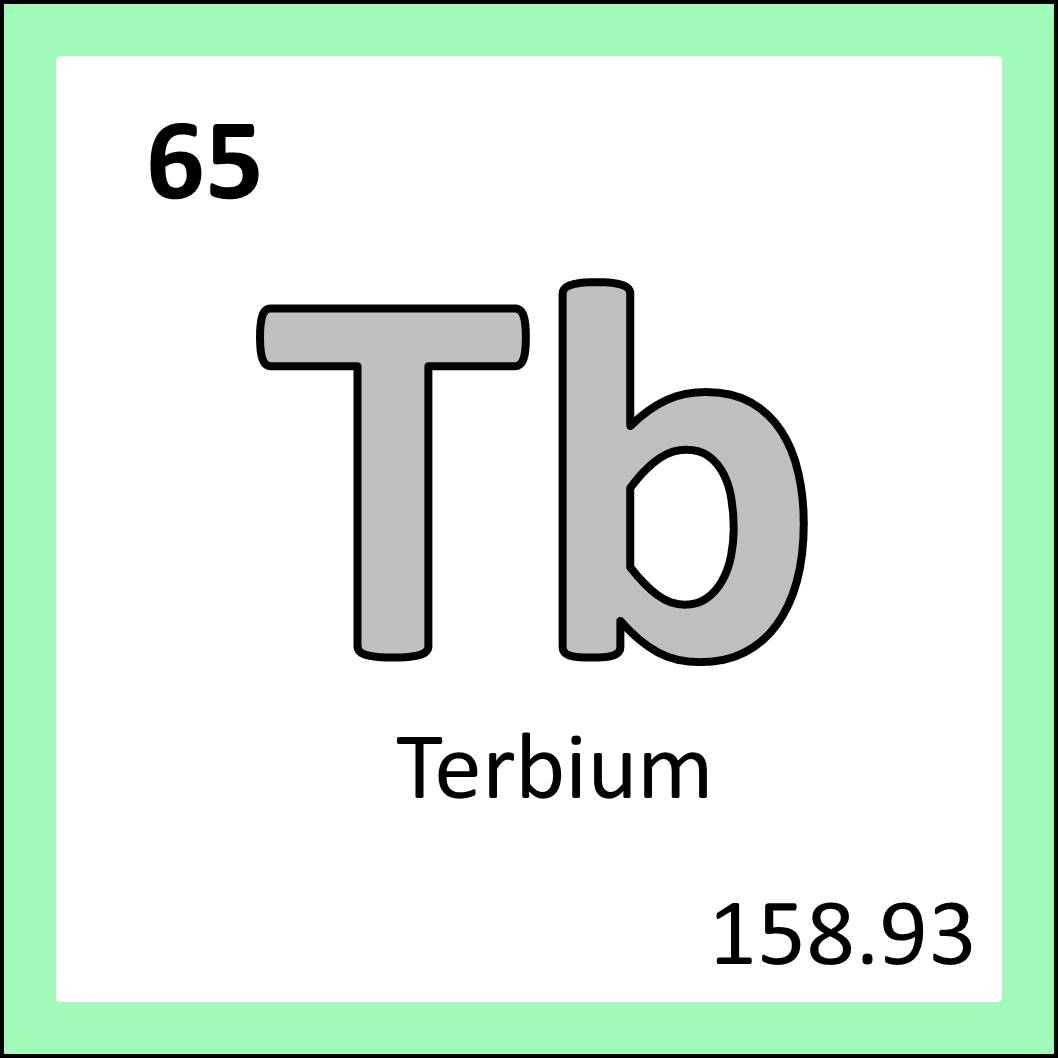


Clockwise from left: an old fashioned colour TV (from PickPik), terbium as it appears in the periodic table, a soft lump of terbium (from Wikimedia Commons).
Terbium is one of those elements that doesn’t often come immediately to mind when you think of chemical elements, but do not underestimate it! The first thing that is apparent if you were to find some pure terbium is that it is super soft, able to be cut with a knife. Unfortunately terbium is never found in its pure form in nature, but the place it was first discovered has led to not one but 4 elements to be named after it…
For this story we return to a common country in elemental discovery: Sweden. In the 16th century a quartz mine was established in the village of Ytterby on the island of Resarö near Stockholm. Ytterby roughly translates to “outer village”, and the discovery of a strange mineral later called gadolinite. In 1843 the chemist Carl Gustof Mosander found when analysing some yttria (yttrium oxide) that there was an impurity in it, which turned out to contain a new element. He named it terbium after the village of Ytterby, and as we’ll find out, this mineral-rich Swedish village was source to 3 other elements that were all also named after Ytterby! I won’t tell you them all now (except yttrium as I’ve already let that slip), you’ll just have to keep reading these posts!

So this terbium, what do we do with it? Unfortunately the answer to that is not an awful lot, however terbium oxide will go alongside europium as another element that helped bring in colour TV. Terbium oxide also phosphoresces, however it emits green light, therefore providing the green to europium’s red.
Terbium is also a major component of the substance terfenol-D, along with iron and dysprosium. Terfenol-D has a very high magnetostriction, meaning it expands and contracts significantly when exposed to a magnetic field. When exposed in a specific fashion the alloy can create low frequency acoustics that work underwater, which means that terfenol-D is often used in sonar technology as a transducer. The terfenol-D releases the low frequency acoustic wave, and anything it hits and bounces off will be picked up again by a detector. So terbium can help us detect our surroundings in submarines, an everyday use if I’ve ever heard one!

So that’s terbium: a sibling of 4, green-glowing and frequency producing element!

One thought on “Day 28: Terbium”